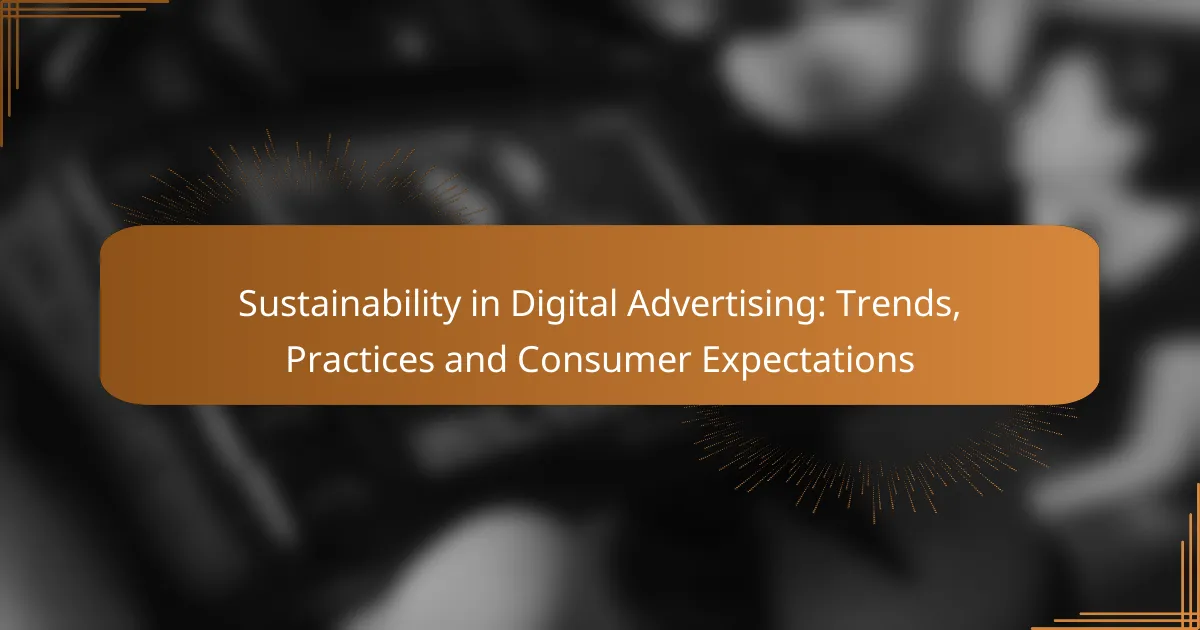Programmatic advertising revolutionizes the way ad space is bought and sold, offering enhanced targeting precision and real-time bidding that significantly improve campaign efficiency. While it presents numerous benefits, such as data-driven insights and scalability, it also faces challenges like ad fraud, data privacy concerns, and technological complexities that must be navigated for successful outcomes.

What are the benefits of programmatic advertising?
Programmatic advertising offers automated buying and selling of ad space, leading to increased efficiency and effectiveness in reaching target audiences. Key benefits include enhanced targeting precision, real-time bidding advantages, improved campaign efficiency, data-driven insights, and scalability across various platforms.
Increased targeting precision
Programmatic advertising allows advertisers to target specific demographics, interests, and behaviors, ensuring that ads reach the most relevant audiences. By utilizing data from various sources, such as browsing history and social media activity, marketers can refine their targeting strategies effectively.
This precision can lead to higher engagement rates and better return on investment (ROI). For example, targeting users who have previously visited a website can significantly increase the likelihood of conversion.
Real-time bidding advantages
Real-time bidding (RTB) enables advertisers to bid for ad space in milliseconds, allowing for dynamic pricing based on demand. This process ensures that advertisers only pay for impressions that are most likely to convert, optimizing their ad spend.
Additionally, RTB facilitates competition among advertisers, which can drive down costs and improve ad placement quality. Advertisers can adjust their bids based on performance metrics, ensuring they remain competitive in the marketplace.
Enhanced campaign efficiency
Programmatic advertising streamlines the ad buying process, reducing the time and resources needed for campaign management. Automated systems handle tasks such as ad placement and optimization, allowing marketers to focus on strategy and creative development.
Moreover, the ability to quickly analyze performance data means that campaigns can be adjusted in real-time, ensuring optimal results without lengthy delays.
Data-driven insights
Programmatic advertising provides valuable insights through data analytics, enabling advertisers to understand audience behavior and campaign performance. This data can inform future strategies and enhance targeting efforts.
By analyzing metrics such as click-through rates and conversion rates, marketers can identify which ads resonate best with their audiences and refine their approaches accordingly.
Scalability across platforms
Programmatic advertising offers scalability, allowing campaigns to be easily expanded across multiple platforms and devices. Advertisers can reach audiences on websites, social media, and mobile apps, ensuring a consistent message across channels.
This flexibility is particularly beneficial for brands looking to increase their market presence without the need for extensive manual adjustments. By leveraging programmatic technology, advertisers can efficiently manage large-scale campaigns while maintaining effectiveness.

What challenges does programmatic advertising face?
Programmatic advertising faces several significant challenges that can impact its effectiveness and reliability. Key issues include ad fraud risks, data privacy concerns, technological complexity, and transparency issues, all of which require careful management to ensure successful advertising campaigns.
Ad fraud risks
Ad fraud is a major challenge in programmatic advertising, where malicious actors exploit automated systems to generate false impressions or clicks. This can lead to wasted budgets and skewed performance metrics.
Common types of ad fraud include click fraud, where bots simulate user clicks, and impression fraud, where ads are displayed on non-human traffic sources. Advertisers should implement verification tools and work with trusted partners to mitigate these risks.
Data privacy concerns
Data privacy is a critical issue in programmatic advertising, especially with regulations like GDPR in Europe and CCPA in California. These laws impose strict guidelines on how personal data can be collected and used, impacting targeting capabilities.
Advertisers must ensure compliance by obtaining explicit consent from users and being transparent about data usage. Utilizing anonymized data and focusing on aggregated insights can help navigate these privacy challenges while still delivering effective campaigns.
Complexity of technology
The technology behind programmatic advertising can be complex, involving multiple platforms and integrations that may overwhelm advertisers. Understanding the ecosystem, including demand-side platforms (DSPs), supply-side platforms (SSPs), and ad exchanges, is essential for effective execution.
To manage this complexity, advertisers should invest in training and resources to familiarize themselves with the technology. Simplifying workflows and leveraging user-friendly platforms can also enhance efficiency and reduce the learning curve.
Transparency issues
Transparency in programmatic advertising is often lacking, leading to concerns about where ads are placed and how budgets are spent. Advertisers may not always know if their ads are appearing on reputable sites or if they are being charged fair rates.
To improve transparency, advertisers should demand clear reporting from their partners and utilize tools that provide visibility into campaign performance. Establishing direct relationships with publishers can also enhance trust and accountability in the advertising process.

How does programmatic advertising improve efficiency?
Programmatic advertising enhances efficiency by automating the ad buying process, allowing marketers to target audiences more precisely and optimize their ad spend. This leads to better resource allocation and improved campaign performance over time.
Automation of ad buying
Automation in programmatic advertising streamlines the purchasing of ad space through algorithms and real-time bidding. This reduces the need for manual negotiations and allows advertisers to buy inventory at scale, saving time and reducing operational costs.
By utilizing demand-side platforms (DSPs), advertisers can set specific criteria for their target audience, ensuring that their ads are shown to the right people at the right time. This targeted approach can lead to higher engagement rates and better return on investment (ROI).
Optimization of ad placements
Programmatic advertising optimizes ad placements by analyzing data to determine the most effective channels and formats for reaching target audiences. This data-driven approach allows advertisers to adjust their strategies in real-time based on performance metrics.
For instance, if a particular ad placement is underperforming, programmatic systems can automatically shift budget allocations to more successful placements, maximizing overall campaign effectiveness. Advertisers can also experiment with different creative formats to see which resonates best with their audience.
Performance tracking capabilities
Performance tracking in programmatic advertising provides detailed insights into how ads are performing across various platforms. Advertisers can monitor key performance indicators (KPIs) such as click-through rates, conversions, and return on ad spend.
By leveraging analytics tools, marketers can gain a comprehensive view of their campaign’s effectiveness and make informed decisions for future strategies. Regularly reviewing these metrics helps identify trends and areas for improvement, ensuring continuous optimization of ad campaigns.

What criteria should be considered when choosing a programmatic platform?
When selecting a programmatic advertising platform, consider factors such as integration capabilities, cost structures, and the diversity of available inventory sources. These criteria will help ensure that the platform aligns with your advertising goals and operational needs.
Integration with existing tools
Integration with existing marketing tools is crucial for a seamless workflow. Ensure the programmatic platform can connect with your current Customer Relationship Management (CRM) systems, analytics tools, and content management systems. This compatibility enhances data sharing and campaign management efficiency.
Look for platforms that offer APIs or built-in integrations with popular tools like Google Analytics or Salesforce. This will save time and reduce the complexity of managing multiple systems.
Cost structure analysis
Understanding the cost structure of a programmatic platform is essential for budgeting. Costs can vary widely based on factors such as platform fees, media costs, and additional service charges. Evaluate whether the platform operates on a cost-per-impression (CPM), cost-per-click (CPC), or cost-per-acquisition (CPA) basis to find the best fit for your financial strategy.
Consider platforms that provide transparent pricing models. Hidden fees can significantly impact your advertising budget, so ensure you have a clear understanding of all potential costs involved.
Available inventory sources
The variety of inventory sources available on a programmatic platform can greatly influence campaign success. Look for platforms that provide access to a wide range of publishers and ad exchanges, as this increases the potential reach of your ads. Diverse inventory sources can also help in targeting specific demographics effectively.
Check if the platform offers access to premium inventory or niche markets that align with your target audience. This can enhance the quality of your ad placements and improve overall campaign performance.

How is programmatic advertising evolving in major markets?
Programmatic advertising is rapidly evolving in major markets, driven by advancements in technology and data analytics. This evolution is characterized by increased automation, improved targeting capabilities, and a growing emphasis on transparency and efficiency.
Increased automation and efficiency
The automation of ad buying processes has significantly streamlined operations, allowing marketers to allocate budgets more effectively. This shift reduces manual intervention, enabling real-time bidding and optimizing ad placements based on performance metrics.
For example, automated systems can analyze user behavior and preferences to deliver ads that are more likely to resonate with specific audiences. This efficiency can lead to better return on investment (ROI) and reduced costs over time.
Enhanced targeting capabilities
Programmatic advertising now leverages advanced data analytics to enhance targeting capabilities. Advertisers can utilize first-party and third-party data to create highly specific audience segments, ensuring that ads reach the most relevant consumers.
In practice, this means that campaigns can be tailored to demographics, interests, and even real-time behaviors, increasing the likelihood of engagement. Marketers should focus on collecting and analyzing data to refine their targeting strategies continually.
Focus on transparency and brand safety
As programmatic advertising matures, there is a growing emphasis on transparency and brand safety. Advertisers are increasingly demanding clarity on where their ads are placed and how their budgets are spent.
To ensure brand safety, companies are implementing measures such as whitelisting and blacklisting specific sites. Advertisers should prioritize partnerships with reputable platforms that provide detailed reporting and insights into ad placements and performance metrics.



